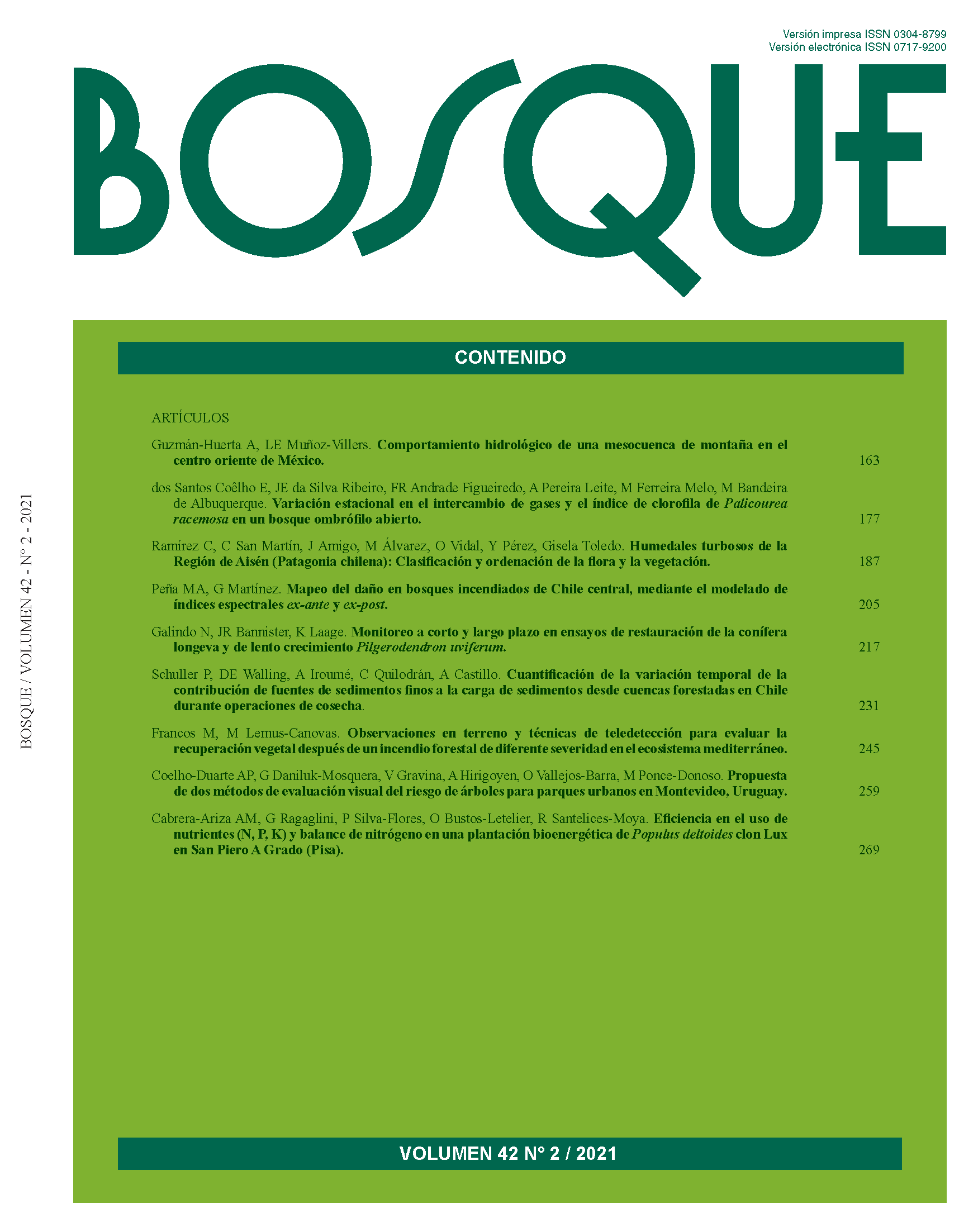Peat bog wetlands of Aisén Region (Chilean Patagonia): Classification and ordination of flora and vegetation
Main Article Content
Abstract
The peat bogs of Capitán Prat Province in Aisén Region in Chilean Patagonia were studied, raising 204 vegetation samples with plant sociological methodology, with which an initial table with 106 species of flora in its first column was built. With traditional methodology, this table was ordered using differential species and with multivariate classification and ordination statistics, all the possible ecological information contained in it was extracted. Four plant communities of the peat bog formation were determined: Gaultherio-Sphagnetum magellanici (Sphagnum peat bog), Schoeno andinus- Lepidothamnetum fonkii (ciprés enano peat bog), Cortaderio egmontianae-Schoenetum andinus (gramineous peat bog) and Drosero uniflorae-Donatietum fascicularis (pulvinate peat bog). The third Cortaderio egmontianae-Schoenetum andinus is proposed as a new plant association. The floristic similarity among them was high, even though they can be easily physiognomically differentiated. Multivariate ordination suggests that waterlogging and temperature, conditioned by relief and altitude, are important factors in the differentiation of peat bog communities. It is concluded that of these four associations, two -the Sphagnum peat bog and Lepidothamnus fonkii peat bog- correspond to the region of the evergreen Magellanic Forest, while the other two are northern outposts of the Magellanic Tundra Region, typical of the Southern Hemisphere, especially in Chile and New Zealand.

